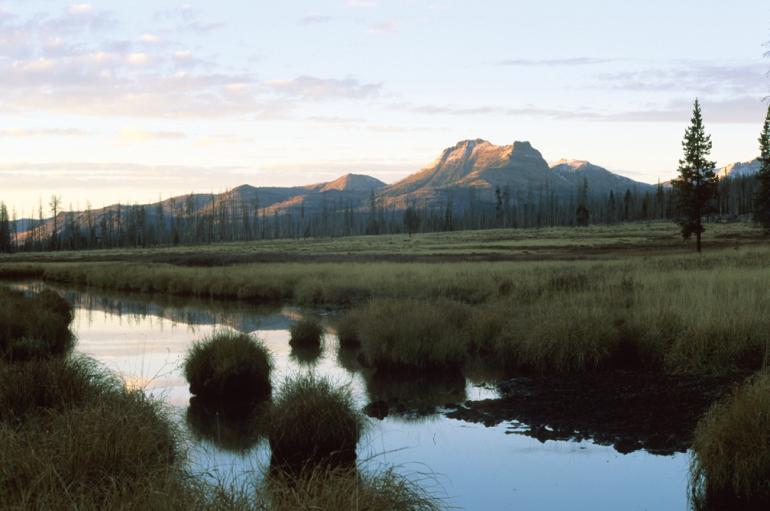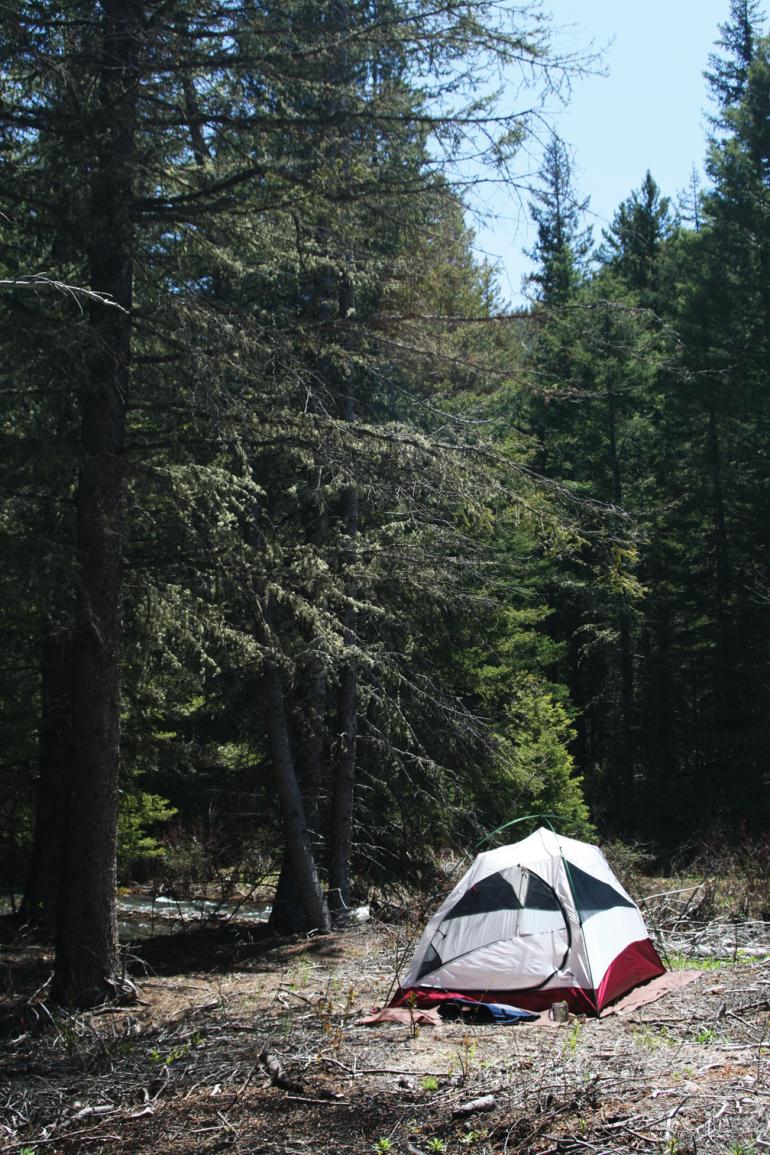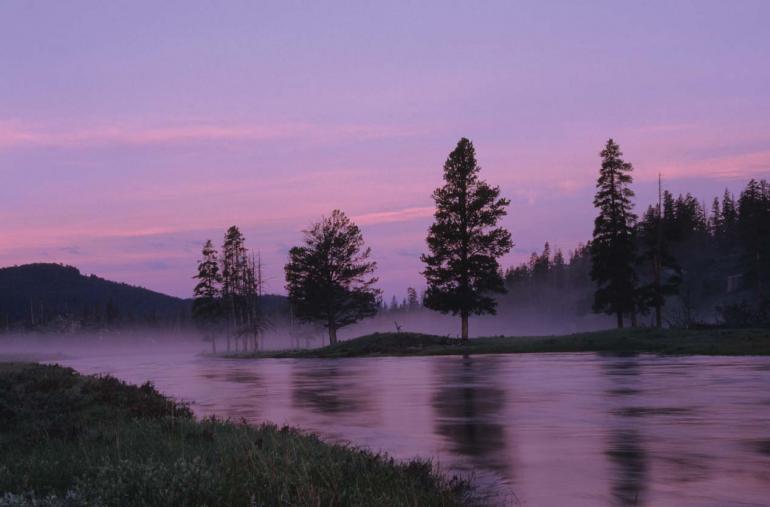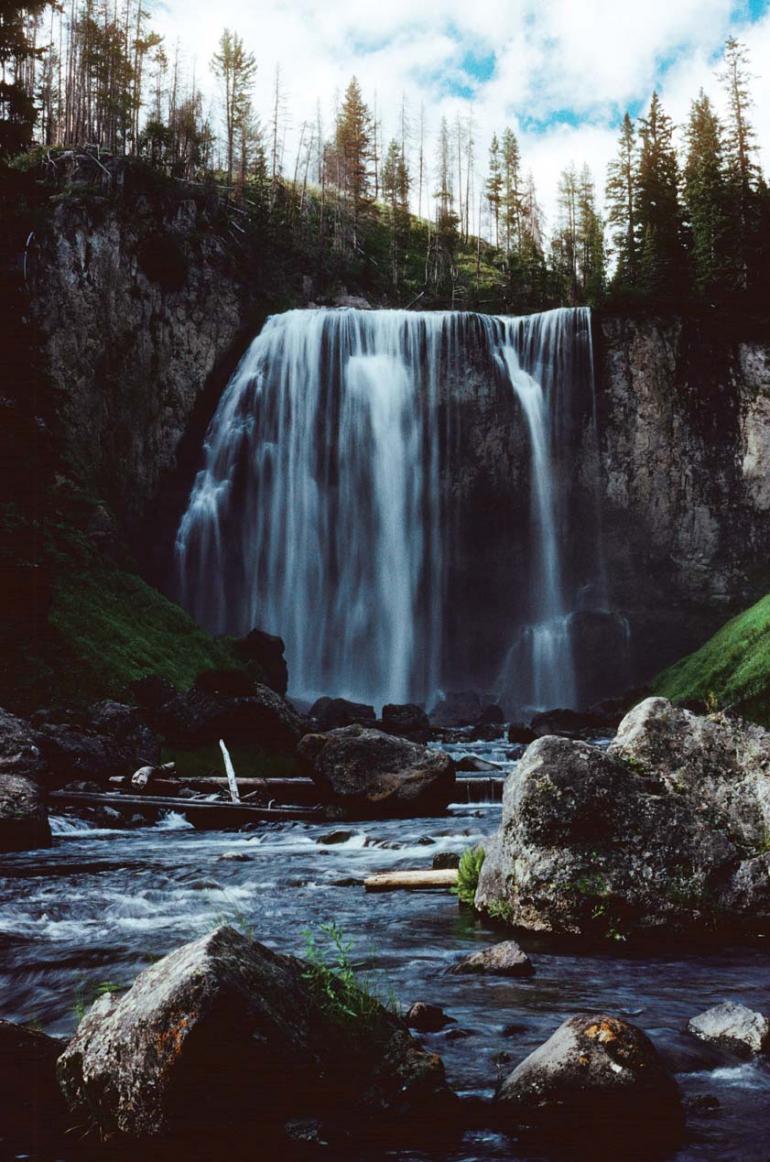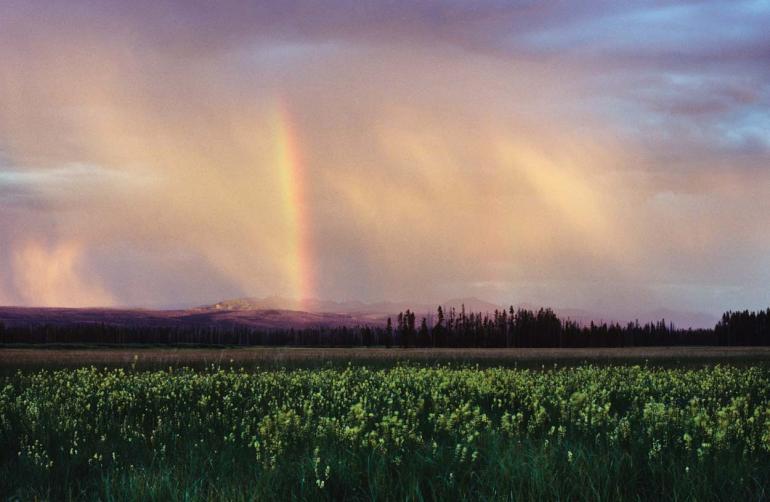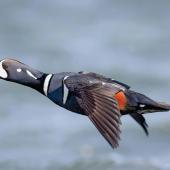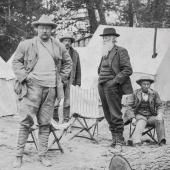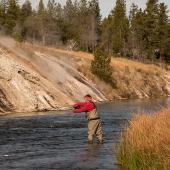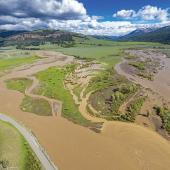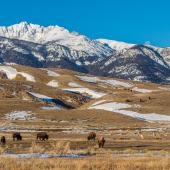Yellowstone Undesignated
I couldn’t believe my eyes. Here I was, languidly enjoying coffee at 10am after spending the night at a designated backcountry campsite on Slough Creek, when the backpackers who reserved the site for that evening began loitering at the edge of it, waiting for me to pack up and leave. Apparently I hadn’t requested a late check-out.
The two looked innocent enough. Judging by the rod cases strapped tightly to their packs, they were, like myself, here at least partly to fool a few of the creek’s legendary cutthroats. Who could blame them? Yet, as I quietly rolled up my tent, I began pondering the Yellowstone National Park campsite system.
The Spot Market
The world’s first national park, like most others in the United States, has a campsite reservation system in place to accommodate the large numbers of people interested in visiting the most complete remaining ecosystem in the lower 48 states. This system involves filing a backcountry permit request form and typically checking in at the nearest ranger station before the trip to pick up the actual permit, which must be carried while in the backcountry. It also involves viewing the latest educational backpacking video, which talks about safety and minimal-impact camping.
Hikers camp at what are referred to as “backcountry sites,” which are numbered and marked. The Park usually allows campers to stay for no more than three consecutive nights at any backcountry site on a given permit.
The system works quite well, keeping things nice and tidy in the vast recesses of wilderness. The hikers know where they are, and the rangers know exactly where the hikers are.
There are a few problems, however.
The biggest of these is that the sites always look the same upon arrival: a fire ring made of charred, blackened rocks, a metal sign that labels the site, and a “food pole” to keep things away from bears. Even though the sites are fairly evenly distributed throughout Yellowstone's two million acres of backcountry, the experience can sometimes feel canned.
Another problem is safety. Sure, the rangers know where you are—but so do the bears. The bears know because they sat there a few nights before listening to Girl Scouts giggle right where you are sleeping. Hopefully those girls paid attention during the educational video and kept a clean camp—it would really suck if a bear got some food at a backcountry campsite during a careless camper’s visit, and then came back for more during yours. In short, you are only as safe as the previous campers were clean.
The backcountry site system also hampers safe adventure-seeking (and sometimes good photography) because large areas of Yellowstone’s backcountry have few backcountry campsites. The National Park Service knows this, which is why it also issues permits to camp in what it calls “Undesignated Backcountry Sites.”
The Great Beyond
Getting one of these permits is both a challenge and a privilege. The right way to go about it begins with learning the rules and having a realistic plan. You and a dozen friends will never get permission to haul in a keg and have a bonfire at Shoshone Geyser Basin. Nor will you be allowed to camp near what the rangers think are desirable hot-potting areas, or near a wolf den for cute puppy pictures. You have to register your plan with the Park’s backcountry reservation system and get preapproval from the area’s subdistrict ranger. This means you have to know your stuff, including where the Bear Management areas are. Don’t waste their time, and you just may get what you want.
Begin your quest with a preliminary visit to nps.gov/yell/planyourvisit/ things2do.htm. Click on Backcountry Hiking & Camping, then choose Online Backcountry Trip Planner. Or, visit one of the Park’s ranger stations to fill out the required Trip Planning Worksheet. These requests must be either sent by snail mail or delivered in person. For the rangers to take your proposal seriously, they have to know you are familiar with minimal-impact camping techniques, have adequate gear, and have confidence that you know how to hike around bears and other wildlife. This really means you should already have experience in the Park, and hopefully you are no stranger to the rangers and the permit process. Every member of your group will be required to watch the educational video.
When going off-trail in Yellowstone, the Park seems to swallow you whole. Self -sufficiency is an absolute necessity. It’s also essential that you are familiar with backcountry-navigation techniques. There are also no handy food poles around. If you’ve never hung food in a tree, you’d better practice. It can be harder than it looks, and you should not attempt it for the first time in the dark!
This all might seem like too much preparation and risk. But after making over 70 backpacking trips to Yellowstone in my lifetime, the few that required undesignated site permits rank among the best, hands down. In my opinion, it’s really the best way to experience the backcountry of Yellowstone—when they let you do it. And the best part? A later check-out time.
Undesignated Site Tips
• Always set up camp well before dark, and remember this necessity when planning your departure and arrival time.
• Always hang food before dark.
• Always know exactly where you are in the backcountry.
• Head back to the trail or a designated site if you have an emergency or problem at an undesignated site.
• Never camp illegally in Yellowstone.
• Scout the area before setting up camp, looking for recent bear signs in particular. If you see signs of bear activity, avoid the area, even if it means changing your itinerary or abandoning your trip plans.
• Always purchase a Yellowstone fishing license if fishing is on the agenda.
• Having an undesignated site permit is not a license to break the rules. Camp away from sensitive areas, including lakeshores and thermal features.
• Never build fires at undesignated sites. Remember that you could ruin it for others who may wish to be as adventurous as you are!
Yellowstone Backcountry Resources:
Beyond Road's End, National Parks Service
Leave No Trace: A Practical Guide to the New Wilderness Etiquette, Annette McGivney
Bear Aware: Hiking and Camping in Bear Country, Bill Schneider
Hiking With Grizzlies: Lessons Learned, Tim Rubbert
Yellowstone Contact Information
Yellowstone National Park
P.O. Box 168
Yellowstone National Park, WY 82190
Yellowstone National Park Central Backcountry Office
(307) 344-2160
nps.gov/yell/planyourvisit/backcountrytripplanner.htm
[email protected]
Photographer Patrick Wherritt, Jr. is the lead guide for Big Sky's Yellowstone Touring Company as well as publisher of the yellowstonewildernessmag.com.

